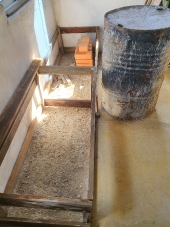
 4
4





 6
6




For all your Montana Masonry Heater parts (also known as) Rocket Mass heater parts.
Visit me at
dragontechrmh.com Once you go brick you will never go back!
 4
4








 6
6




For all your Montana Masonry Heater parts (also known as) Rocket Mass heater parts.
Visit me at
dragontechrmh.com Once you go brick you will never go back!




 7
7




For all your Montana Masonry Heater parts (also known as) Rocket Mass heater parts.
Visit me at
dragontechrmh.com Once you go brick you will never go back!
 6
6








 7
7




For all your Montana Masonry Heater parts (also known as) Rocket Mass heater parts.
Visit me at
dragontechrmh.com Once you go brick you will never go back!
 7
7








 7
7




For all your Montana Masonry Heater parts (also known as) Rocket Mass heater parts.
Visit me at
dragontechrmh.com Once you go brick you will never go back!
 7
7








 6
6




For all your Montana Masonry Heater parts (also known as) Rocket Mass heater parts.
Visit me at
dragontechrmh.com Once you go brick you will never go back!
 9
9




 6
6




 The stove itself has a fair bit of mass, and is now working quite well after a few tweaks and experiments.
The stove itself has a fair bit of mass, and is now working quite well after a few tweaks and experiments.
Austin Shackles : email anshackles"at"gmail.com.
 6
6




 4
4




 3
3




Austin Shackles wrote:For what it's worth, I used refractory mortar on the lower part of the Matt Walker stove*
One thing I keep noticing though is the clay mortar has very limited adhesion to the bricks when dried out. It's easy to knock bricks loose.
* documented here if you haven't already seen it.
 4
4




Glenn Herbert wrote:.
The proportions in the original RMHs were 1:2:3; more recent advice has been 1:2:4. I have found that 1:1.5:3 works well, and on an 8" system can be 16" feed height, 24" burn tunnel floor length, and 48" riser height from floor, giving an 8" burn tunnel ceiling. My system in a tall bell with good natural draft actually has a 45" riser, and flames seldom reach the top of the riser, meaning combustion is complete by then. (I have a nail-sized peephole in the access panel above the J-tube so I can see across the top of the riser.)

|
permaculture is giving a gift to your future self. After reading this tiny ad:
The new permaculture playing cards kickstarter is now live!
https://www.kickstarter.com/projects/paulwheaton/garden-cards
|







